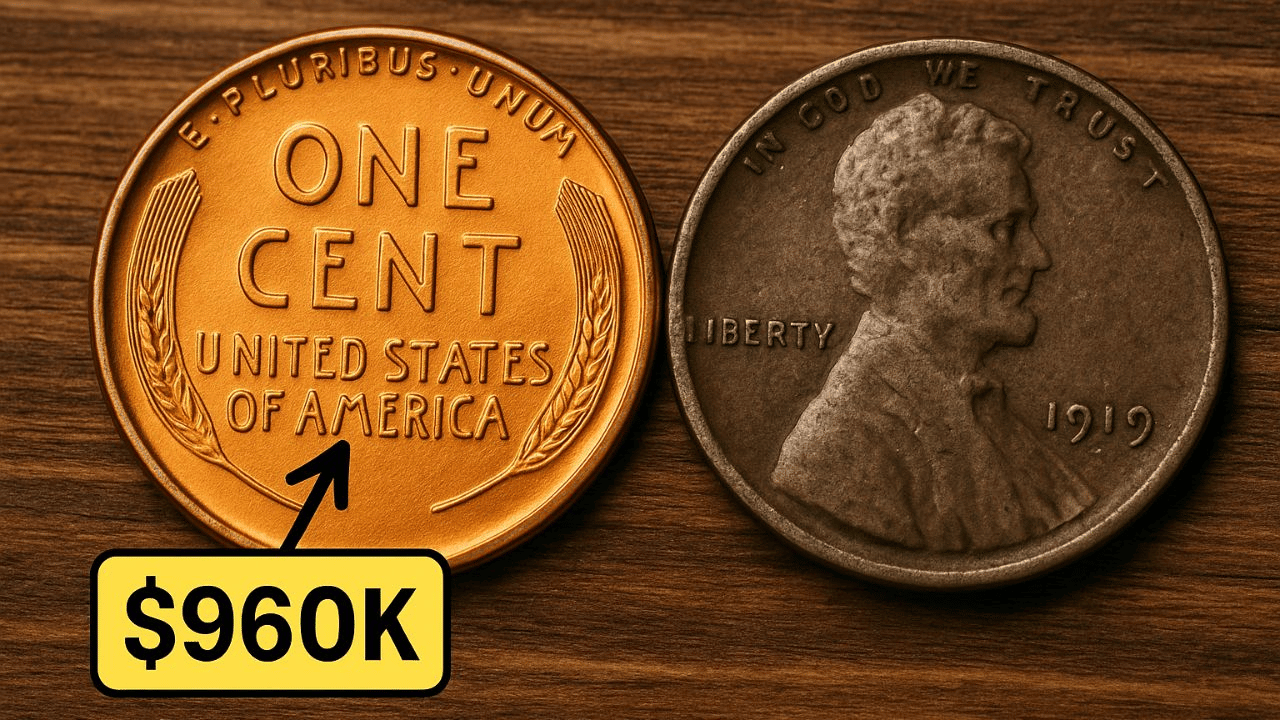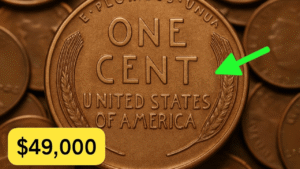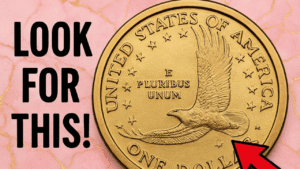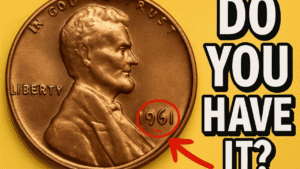Let’s be honest: most of us wouldn’t bend over to pick up a penny off the sidewalk. They’re basically wallet lint. Ubiquitous. Worthless. More annoying than useful.
But what if I told you one of those crusty copper coins—you know, the kind hiding under your car’s floor mat or collecting grime in the bottom of your backpack—could be worth nearly a million dollars?
No fluff. No late-night infomercial vibes. Just cold, hard, historical reality.
Let’s talk about the Lincoln Wheat Penny.
The Humble Beginnings of the Wheat Penny
Before we get to the juicy six-figure stuff, a quick backdrop.
The Lincoln Wheat Penny made its debut in 1909, marking Abraham Lincoln’s 100th birthday. It was the first U.S. coin to feature a real person—a big deal back then, because folks were used to Lady Liberty or random Romanesque imagery. Putting an actual president’s face on currency? Bold move, U.S. Mint.
On the reverse side? Two wheat stalks, arching around like little symbols of Midwest pride and American prosperity. It was simple, clean, and oddly charming.
That design stuck around until 1958, after which it was swapped out for the Lincoln Memorial (aka, the version no one ever gets excited about).
Why Some Wheat Pennies Are Worth a Fortune
Let’s be crystal clear: most Wheat Pennies are worth a few cents. Maybe a buck or two if they’re in mint condition.
But a few are outliers—coins that were minted under weird conditions, with rare materials, or in low quantities. These little oddballs are the ones collectors go bananas for.
And the crown jewel?
The one that’s burned into every coin nerd’s dream journal?
The 1943 Copper Wheat Penny.
The $960,000 Coin That Shouldn’t Exist
In 1943, the U.S. was all-in on WWII. Copper was needed for bullets and wiring, so the Mint switched penny production to zinc-coated steel. They were shiny, silver-colored, and kinda cool-looking—until they rusted in your pocket.
But somehow, a few copper blanks from 1942 snuck onto the presses and were struck with the 1943 design.
It was an accident. A big one.
Today, those rare 1943 bronze/copper pennies are worth tens or even hundreds of thousands of dollars. One sold for $960,000 at auction. That’s more than a Lamborghini. More than a median home in the suburbs. All for a one-cent mistake.
And here’s the kicker: a few of these coins are still out there. People have found them in pocket change, at estate sales, in coffee cans on Grandpa’s shelf.
So yeah, that penny you ignored last week? Might’ve been a house.
Cheat Sheet: What to Look For
If you’re digging through a jar of old coins, here’s how to spot a potentially rare Wheat Penny:
| What to Check | Why It Matters | Value Potential |
|---|---|---|
| Year: 1943 | Key year for copper error | Up to $960,000 |
| Magnet Test | Sticks = steel (common), Doesn’t stick = possible copper error | $$$ |
| Mint Mark | Look for “S” or “D” under the year | Some combinations are rarer |
| Condition | Uncirculated coins are worth way more | From a few bucks to thousands |
| 1909-S VDB | First-year penny with rare initials | $600–$3,000+ |
And do not clean your coin. That little polish job you think will help? It’ll destroy the value. Collectors want that aged patina.
Real People Have Found These
This isn’t urban legend stuff. There are documented cases of people stumbling on rare Wheat Pennies in the most random places.
One teenager found a 1943 bronze penny in his lunch money. He later sold it for $40,000. Not bad for a middle school hustle.
Another record-breaker was discovered decades after minting, just sitting in a private collection.
People have found them at garage sales, estate cleanouts, and even in Coinstar reject bins. So yeah, check your change before you dump it.
More Than Just a Coin
There’s something poetic about it, honestly.
This tiny, grimy piece of metal—smaller than a bottle cap—can hold a century of history. A story. A mistake. A fortune.
The Lincoln Wheat Penny has become a gateway for collectors. It’s accessible. It’s old, but not ancient. And it ties together Americana, war history, economic shifts, and the thrill of the hunt.
Even if you never find a jackpot coin, just looking changes how you see money. It slows you down. Makes you pay attention. Reminds you that value isn’t always obvious.
FAQs
What years were Lincoln Wheat Pennies made?
From 1909 to 1958. After that, the Lincoln Memorial design took over.
What’s the rarest Wheat Penny?
The 1943 copper penny takes the top spot. One sold for $960,000. But the 1909-S VDB is also a collector favorite.
Can I still find valuable ones in circulation?
It’s rare, but absolutely. They show up in coin jars, tip trays, and garage sales all the time.
Should I clean a dirty coin before selling it?
NOPE. Cleaning can wreck the value. Leave it grimy and let the experts handle it.



